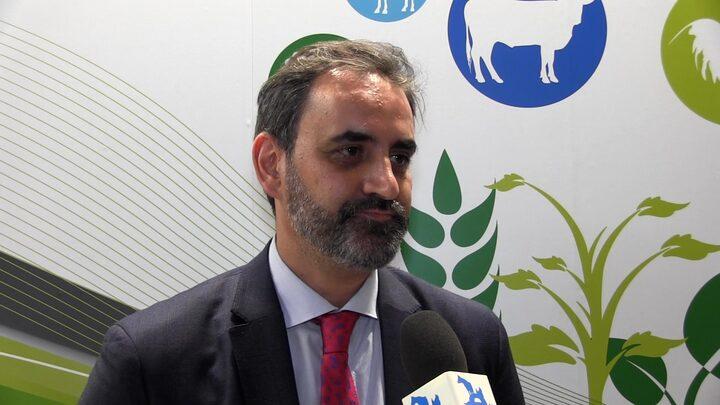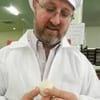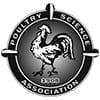Check out what is new in Poultry Industry
Find the best technical articles, forums, and videos on Poultry Industry at Engormix. Enter now and interact with the world's largest agricultural social network.
.jpg&w=3840&q=75)
Kalen Cookson (Zoetis) explains his work on recombinant vaccine immunity at different times of the challenge, in this interview during IPPE 2023 in Atlanta, USA....
Comments : 0
Recommendations: 1
.jpg&w=3840&q=75)
Cristiano Bortoluzzi (DSM) explains how to precisely modulate the microbiome with a specific technology, as well as the difference between microbiota and microbiome, in this interview during IPPE 2023 in Atlanta....
Comments : 0
Recommendations: 1
.jpg&w=3840&q=75)
Amine Benarbia (NOR-FEED) explains the benefits of using saponin supplementation in combination with vaccines, in this interview during IPPE 2023 in Atlanta, USA....
Comments : 2
Recommendations: 2
.jpg&w=3840&q=75)
Marcela Arango (University of Arkansas) discusses her research on Enterococcus cecorum in broiler chickens, in this interview during IPPE 2023 in Atlanta, USA....
Comments : 0
Recommendations: 0
.jpg&w=3840&q=75)
Danielle Graham (University of Arkansas) comments on the tests of a monoglyceride blend and its benefits under a necrotic enteritis challenge, in this interview during IPPE 2023 in Atlanta, USA....
Comments : 0
Recommendations: 0
.jpg&w=3840&q=75)
Jordon Gruber (IFF/Danisco Animal Nutrition) talks about field trial interventions and Salmonella community dynamics, in this interview during IPPE 2023 in Atlanta, USA....
Comments : 0
Recommendations: 0

Carlos López Tomé, Veterinarian, Technical Department at Liptosa, speaks about the mode of action of Naturcoline, a Choline adjuvant for poultry nutrition.
*Certain information associated with products, their composition and claims may be different depending on the geographical region and may not be applicable in all countries. Liptosa reserves the right to adapt to the requirements and legislation in each case.
The information and technical recommendations provided herein are based on...
Comments : 0
Recommendations: 2
.jpg&w=3840&q=75)
Elizabeth Santin (I See Inside Institute) explains how this method works as an efficient sanitary management tool to predict health results in broiler production....
Comments : 0
Recommendations: 3


Mycotoxin Testing in the Feed Chain: A Risk Prevention Strategy for Raw Material Suppliers, Grain Storage Facilities and Processors, and Feed Manufacturers
Suggested link
.jpg&w=3840&q=75)
Dr. Chris Morrow (BioProperties) discusses his recent work regarding Avian Mycoplasma, in this presentation for Engormix....
Comments : 5
Recommendations: 4
Poultry farmers are looking for feed additives to boost the immune system and improve gastrointestinal health in the post-antibiotic era. Bacillus species-based fermented products are an influential and effective alternative to optimize gut health. Bacillus species-based fermented products and their derived antimicrobial cyclolipopeptides Bacillus spp. are gram-positive bacteria with rod-shaped endospores that generate...
Comments : 1
Recommendations: 1
.jpg&w=3840&q=75)

GuanAMINO® - The creatine source that ensures optimal nutrient utilization | Evonik
Suggested link
.jpg&w=3840&q=75)
Shawna Weimer (University of Arkansas and Poultry Extension Collaborative) talks about the transition to cage-free production and consumer preferences, as well as enrichments and stunning, in this interview during IPPE 2023 in Atlanta, USA....
Comments : 0
Recommendations: 0
.jpg&w=3840&q=75)
Steve Lerner (CHR. Hansen) explains the effects of probiotics on the well-being of birds, and also comments on welfare and sustainability, in this interview during IPPE 2023 in Atlanta, USA....
Comments : 0
Recommendations: 5
Medicinal mushrooms have remained an important component of animal culture. The genus Cordyceps is one of the largest genera in the family Clavicipitaceae, containing over 750 species. Cordyceps militaris , an entomopathogenic fungus belonging to the class Ascomycetes, is used extensively as a crude drug and a...
Comments : 0
Recommendations: 1
.jpg&w=3840&q=75)
John Starkey (USPOULTRY) talks about the advances in the poultry industry, and the importance of Latin America in achieving this progress, in this interview during IPPE 2023 in Atlanta, USA....
Comments : 0
Recommendations: 2
.jpg&w=3840&q=75)
Diksha Pokhrel (Mississippi State University) comments on biofilm formation and processing interventions, as well as recommended precautions regarding disinfection, in this interview during IPPE 2023 in Atlanta, USA....
Comments : 0
Recommendations: 0
.jpg&w=3840&q=75)
Nath Morris (IPPE Executive VP-Expo) comments on the great feedback received in the latest edition, as well as an expanded floorplan for 2024, in this interview during IPPE 2023 in Atlanta, USA....
Comments : 0
Recommendations: 1

Stefan Eils, Director Sustainability Development at Evonik Animal Nutrition, speaks about the relevance of asustainable food chain production
...
Comments : 0
Recommendations: 5
.jpg&w=3840&q=75)
Manuel Da Costa (Zoetis) explains the benefits of intramuscular application of vaccines regarding protection, in this interview during IPPE 2023 in Atlanta, USA....
Comments : 0
Recommendations: 1
.jpg&w=3840&q=75)
Andy Vance, Executive Director of the Poultry Science Association, talks about his new role, recent challenges in the industry, and PSA goals for 2023, in this interview during IPPE 2023 in Atlanta, USA....
Comments : 0
Recommendations: 2
The 8th International Conference on Poultry Intestinal Health proudly presents the Keynote speakers for the hybrid edition that will be held in Manila, The Philippines, from April 17th to April 19th, 2024.
Keynote speakers
...
Comments : 0
Recommendations: 0






.jpg&w=3840&q=75)



.jpg&w=3840&q=75)


























